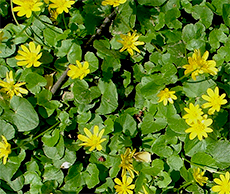Invasive Species

An invasive species is an aggressive non-native species that takes over the habitat of species formerly growing or living in an area. Invasive species are either plants or animals that cause both ecological and economic damage. Invasive species management is necessary to keep them in check.
At Litzsinger Road Ecology Center (LREC), when we refer to invasive species, we are mostly dealing with invasive plant species. Invasive plants are frequently plants that were intentionally introduced by humans. In some cases, immigrants brought plants with them to have a touch of home in their new surroundings. In other cases, a species might have been brought due to a perceived horticultural value. When these plants are introduced, they are often able to out-compete native species. Some aggressive native plants can cause similar problems.
Invasive Species at LREC
Listed below are invasive species present at LREC. Click on the species name to learn more, including where they can be found onsite and our methods of controlling them.
Species of Concern
The following invasive species are not currently found at LREC, but we’re keeping a lookout for them. Click on the species name to learn more about it.
Links
- Invasive Species
http://www.invasive.org/ - Invasive Species
http://www.invasivespecies.gov/ - The Nature Conservancy’s Invasive Species Initiative
http://www.nature.org/initiatives/invasivespecies/ - Early Detection & Distribution Mapping System
http://www.eddmaps.org/ - National Environmental Coalition on Invasive Species
http://www.necis.net/ - USDA Plants Database
http://plants.usda.gov/index.html - Missouri Exotic Pest Plants
http://www.mobot.org/MOBOT/research/mepp/welcome.shtml - Missouri Vegetation Management Manual
http://mdc.mo.gov/landwater-care/plant-management/invasive-plant-management
Is an Invasive Species in Your Backyard?
 LREC has produced a brochure detailing identification information and removal recommendations for ten of the most threatening invasive species of the River des Peres watershed. Native alternatives are also listed. You can download the brochure or request a copy from a member of the staff.
LREC has produced a brochure detailing identification information and removal recommendations for ten of the most threatening invasive species of the River des Peres watershed. Native alternatives are also listed. You can download the brochure or request a copy from a member of the staff.